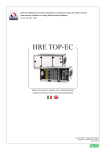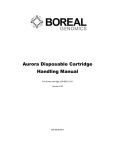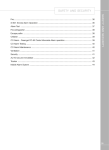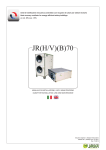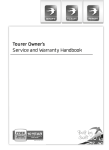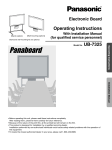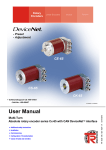Download Transportation Technologies
Transcript
Transportation Technologies Technology Education Safety Procedures and Recommendations For all Transportation Classes Safety Pledge: Read and discuss rules, have students and their parents sign the safety pledge. Students will return the pledge signed by parent we will then keep the pledge on file while the student is enrolled in Technology Education classes. General Safety: Discuss general safety rules applicable to any shop or lab. Hand Tool Safety: Discuss and demonstrate proper use of common hand tools used in the lab or shop. Machine Tool Safety: Students will learn the key features, adjustments, purpose and the safety concerns of the machines utilized in the course they are enrolled in. The machines and power tools are included but not limited to these: Drill Press Vehicles Hoists Safety Wash Bench Grinder Valve Grinder Hydraulic Press Engines Arc Welder Corded/Cordless drills Floor Jacks and Stands Compressed Air Oxyacetylene Torch Brake Lathe Tire Changer Wheel Balancer Chain Hoist Pressure Washer Shop Vacs Students will be evaluated by tests and quizzes, performance evaluations, and observation by the instructor. Transportation Technologies 2 6/2003 GENERAL SAFETY PRACTICES Shop Behavior 1. "Horse-play", running and the throwing of objects are dangerous practices in any shop and are forbidden at all times, and could cause dismissal from class. 2. Caution other students if you see a violation of a safety rule. 3. When using machines or hand tools, give the job at hand all of your attention. 4. Cooperate with your classmates in the student management program of your shop. 5. Each student is responsible for helping in shop cleanup. Clothing 6. Loose clothing, jewelry, and gloves are not to be worn while you are working with power tools. 7. Sharp, pointed tools or materials are not to be carried in clothing, Hold sharp points and sharp edges down. 8. Keep hair away from equipment in operation. Long hair must be tied up and back. Safety Glasses 9. Safety glasses must always be worn while working or watching others work in the shop. 10. Eye glasses must not be used in place of goggles or face shields, unless they have tempered lenses. 11. Face Shields must be used when using abrasive machines. 12. When compressed air is used for cleaning. wear eye protection. Take care to direct chips, shavings, and dust away from other students. NEVER ALLOW THE STREAM OF AIR TO COME IN CONTACT WITH YOUR BODY. Approval 13. Students are to operate only those machines for which they have received instruction and permission to operate. 14. When in doubt, ask your teacher. Do not depend upon the advice of another student. 15. Never operate power machines when the instructor is not in the shop. 16. Ask your teacher to approve all projects you plan to do. 17. All special setups must be checked by the teacher before the power is turned on. 18. Repairs are to be made on shop equipment only when permission has been given. Do not tamper with shop equipment. Transportation Technologies 3 6/2003 Safety Zones 20. Observe safety zones. Only the operator and teacher are permitted within the working area around a machine. 21. Don't lean on the machine. Stand clear 22. Disturbing another student while he is working is a dangerous practice. Unsafe Shop Conditions 23. If equipment is not working properly, shut it off and tell the teacher at once. 24. Report to the teacher all breakage or damage to tools, machinery, or equipment. 24. Guards and other safety devices are for the protection of the operator and must always be in place. 25. Keep floors, aisles, and passageways clear of stock, tools, and materials. 26. Wipe up immediately any liquids spilled on the floor. 27. Keep tools and materials from projecting over the edge of benches whenever possible. 28. A student who sees a dangerous situation must report it at once to the teacher. 29. The motion involved in striking or cutting must be done in a direction away from you and other students. 30. Compressed air should not be used to clean off machines, because it may cause damage to bearing surfaces. Electrical 31. The main power switches in the shop must be turned "on" or "off" ONLY by the teacher 32. Make certain your hands are completely dry before touching electrical switches, plugs, or receptacles. Fire 33. Oily or paint-filled rags must be placed in a covered metal container. Oily and greasy shop clothing must be stored in lockers. Never roll them up, 34. Gasoline, chemicals, kerosene, paints, lacquer, thinner, and other finishes or cleaning materials are to be used in a well-ventilated room; They are never be used near an open flame. 35. Never use water to put out an electrical or oil fire. 36. In case of fire in the shop: a. Sound the alarm: FIRE!!!!! b. Turn off all electricity: c. Put the fire out, if possible without injuring oneself. 37. Nothing shall be hung on fire extinguishers, and the area around them must be kept clear so that they may be reached without delay if fire breaks out. Transportation Technologies 4 6/2003 Injury 38. Every injury, no matter how slight, must be reported immediately to your teacher. Explain how it happened. 39. Lifting heavy objects may result in injury. Lift properly or get help, if necessary. Hand Tools 40. Be sure your hands are as free as possible of dirt, grease, and oil when using tools. 41. Use the proper type and size hand tool for the job. 42. Make sure that the tools you are going to use are sharp and in good condition. 43. Handle edged or pointed tools with care. 44. When using a sharp-edged tool, make sure the edge is pointed away from you and your classmates. 45. Clamp small work on a bench or in a vise when using a cold chisel, a hacksaw, or a screwdriver. 46. Never use a chisel, or punch, or hammer with a "mushroomed” head. Chips may fly off and injure someone. 47. Never use a file without a handle. - Be sure that the handle is properly secured to -the file. 48. Files are hard and brittle. They may break and cause an injury if they are used as a pry bar or a hammer. 49. Pass tools to classmates with the handles first. Machine Tools 50. Before operating a machine, you must pass the appropriate safety test. 51. Obtain permission from your teacher before using any power equipment. 52. Check all adjustments before starting a machine. 53. Make sure everyone is clear of the machine before starting it. 54. All necessary guards must be in place before using a machine. 55. Only one person may operate a machine at a time. 56. Only one operator should start the machine. 57. Remove all tools, materials, and rags from the machine before starting it. 58. Have the instructor check all special setups and new operations before -turning on the machine. 59. Think about your job while operating a machine. It is dangerous to talk when you are using power equipment. 60. The machine should be completely stopped with the power OFF prior to cleaning, oiling, or repairing. Always turn the power off before leaving a machine. Transportation Technologies 5 6/2003 Machines Safety Practices Horizontal Band 1. Cut no metal under six inches long and 3/8 of an inch thick. 2. Support ends of long pieces. 3. Be sure your work is clamped firmly before starting the saw. 4. When starting, stand to one side of the saw frame. 5. Never put extra pressure on the saw blade. 6. Turn power off before leaving machine. Drill Press 7. Be sure your cutting tool is sharp. 8. The cutting tool must be tight in the chuck. 9. Remove the chuck key or drift pin as soon as you finish using it. 10. Always use a vise or other clamping devices to hold your work. 11. Keep your hands away from the turning spindle. 12. Ease up on the pressure when the cutting tool starts to break through the material. 13. Back the cutting tool out, under power, as soon as the hole is drilled. 14. Wait until the cutting tool stops before brushing off chips or removing your work. 15. All special attachments must be checked by the instructor. (flycutter, hole-saws, long drills, etc.) 16. Long pieces should be always be on the left side of the drill press column. 17. Make adjustments only when the power is turned off. Portable Electric Drill 18. Be sure the switch is in the "off" position before plugging in the electric cord. 19. Hold the machine firmly. 20. Apply straight and steady pressure on the drill. 21. Make sure the drill comes to a complete stop - then rest it on its side. Bench Grinder 22. See that all guards are in place. 23. The tool rest must always be set as close as possible to the grinding wheel, no greater than 1/8”. 24. Always wear a face shield when grinding. 25. Report a cracked or broken wheel to the instructor at once. 26. Keep rags away from the grinder. 27. Do not grind sheet metal on the grinder. 28. Get special permission from your instructor before grinding small objects. 29. Wait until the motor has reached full speed before grinding. 30. Never stand directly in front of the wheel. 31. Always keep your hands away from the grinding machine. 32. Hold your work so it will not be pulled out of or pushed into your hands. 33. Always hold large objects firmly against the tool rest. 34. Use the face of the wheel for grinding, never the side. 35. Keep work in motion across the face of the wheel. 36. Turn the power switch off after using the grinder. Buffer and Wire Wheel 37. Obtain permission before using the buffer. 38. Remove sweaters and jewelry and roll up your sleeves before operating the buffer. Transportation Technologies 6 6/2003 39. 40. 41. 42. 43. 44. 45. 46. 47. 48. Keep rags away from the wheel. Always wear a face shield when using the buffer. Hold work with both hands. Stand to one side of the wheel. Keep your hands away from the wheel. Buff on the LOWER FRONT QUARTER of the wheel . Buff flat pieces from the center towards the lower edge. Always keep sharp edges pointed down. Use the correct pressure against the wheel . Turn off the power after using the machine. Transportation Technologies 7 6/2003 Machining Safety Practices Lathes 1. Obtain permission from your teacher before using the laths. 2. Roll sleeves above elbows and remove or fasten any loose clothes. 3. Make all adjustments only when the machine is at a complete stop. 4. Check to see that all guards are in place. 5. Be sure that all parts of the carriers will clear rotating parts during full length of cut. 6. Remove chuck key or wrench immediat6ty after using. 7. Set tool on center of work to be turned. 8. Make sure that no one but you is inside the operator's zone. 9. Place your hands on the controls or at your sides except when filing or polishing. 10. Keep hands away from hot chips. 11. Use tools that are properly ground for the particular job. 13. Finish cuts that are close to the chuck or against a shoulder by hand feed. 14. Bring lathe to a complete stop before reversing. 15. Remove toolholder and tool post before filing or polishing. 16. Shut off power after using the lathe and stand by until the machine has stopped. 17. Clean machine and area. Transportation Technologies 8 6/2003 Suggested Safety Outline Topics For Auto Mechanics 1. General shop safety 1. 1. Appropriate behavior 1.1. 1. No running, pushing, etc. 1.1.2. Safety glasses worn when in the shop area 1.1. 3. General awareness of shop activities 1.2. Dangerous locations in the shop 1.2.1. Walkway obstacles 1.2.1.1. Hoists 1.2.1.2. Exhaust ports 1.2.2. Around operating machines 1.3. Appropriate clothing and dangers of improper clothing 1.3.1. No synthetic material clothing when using welding equipment 1.3.2. Closed toe shoes 1.3.3. No loose fitting clothing 2. Vehicle safety 2.1. Danger areas on vehicle 2.1. 1. Engine compartment 2.1.1.1. Fans and fan blades 2.1.1.2. Belts and pulleys 2.1.1.3. Batteries 2.1.1.4. Electrical shocks 2.1.1.4.1. Ignition systems shocks 2.1.1.4.2. Charging and electrical system shocks 2.1.2. Transmission position 2.2. Safety devices 2.2. 1. Safety switches 2.2. I. I. Transmissions 2.2.1.2. Brakes 2.2.2. Indicator lights 3. Hoist operation 3.1. Hoist styles 3.1.1. Center post lift 3.1.1.1. Hydraulic 3.1.1.2. Electric 3.1.2. Sidelift 3.1.2.1. Hydraulic 3.1.2.2. Electric 3.2. Vehicle lift points 3.2.1. Full or partial frame vehicles 3.2.2. Unibody frame vehicles 3.3. Hanging obstructions 3.3.1. Exhaust systems 3.3.2. Gas tanks 3.3.3. Brake lines 3.3.4. Drive shafts 3.4. Transmission positioning (neutral) 4. Floor Jacks 4.1. Vehicle lift points 4.1.1. Full or partial frame vehicles 4.1.2. Unibody frame vehicles 4.2. Vehicle rolling 4.2.1. Wheel chocks 4.2.2. Emergency brakes (not reliable) 4.3. Jack stands necessary 4.3.1. Weight capacity 4.3.2. Placement Transportation Technologies 9 6/2003 5. Tool Safety 5.1. Hand tools 5. 1. 1. Uses 5.1.2. Proper procedure 5.2. Hand drill and drill press 5.2. 1. Clamping material 5.2.2. Chuck keys 5.2.3. Guards 5.2.4 Proper procedure 5.3. Oxy-acetylene torch 5.3.1. Uses 5.3.1.1 Cutting materials 5.3.1.1.1. Exhaust systems 5.3.1.1.2. Shocks 5.3.1.2. Heating materials 5.3.2. Fire hazard concerns 5.3.2.1. Flammable chemicals 5.3.2.2. Burnable solids 5.3.3. Proper procedure 5.4. Parts washer 5.4.1. Proper procedure 5.4.2. Effects on skin and eyes 5.4.3. Protective wear 5.4.3. I. Chemical gloves 5.4.3.2. Appropriate eye wear 5.5. Valve grinder and bench grinder 5.5. 1. Uses 5.5.2. Proper procedure 5.6 Compressed Air 5.6. 1. Uses 5.6.2. Safety Concemes 5.6.3. Tools 6. Shop Chemicals 6.1. Storage 6.1.1 Unused 6.1.2. Used 6.2. Uses 7. Shop rags 7.1. Storage (flat while in use) 7.2. Disposal Transportation Technologies 10 6/2003 Suggested Safety Outline Topics For Small Gas Engines 1. General shop safety 1. 1. Appropriate behavior 1.1.1. No running, pushing, etc. 1.1.2. Safety glasses worn when in the shop area 1.1.3. General awareness of shop activities 1.2. Dangerous locations in the shop 1.2.1. Walkway obstacles 1.2.1.1. Hoists 1.2.1.2. Exhaust ports 1.2.2. Around operating machines 1.3.Appropriate clothing and dangers of improper clothing 1.3.l. No synthetic material clothing when using welding equipment 1.3.2. Closed toe shoes 1.3.3. No loose fitting clothing 2. Engine safety 2.1. Safety devices 2.1. 1. Kill switches 2.1.2. Engine brakes 2.1.3. Blade brakes and clutches 2.1.4. Governor systems 2.2. Inspections 2.2.1. Working safety devices 2.2.2. Complete engine 2.3.Engine storage 2.3.1. Draining fluids 2.3.2. Storage chemicals 2.4.Electrical shocks 2.4.1. Ignition system shocks 2.4.2. Charging and electrical system shocks 2.5.Starting of engines 2.5.1. Securely mounted 2.5.2. Blade removal and weighted flywheel use when necessary 3. Tool Safety 3.1. Hand tools 3.1.1. Uses 3.1.2. Proper procedure 3.2. Hand drill and drill press 3.2.1. Clamping material 3.2.2. Chuck keys 3.2.3. Guards 3.2.4 Proper procedure 3.3. Oxy-acetylene torch 3.3.1 Uses 3.3.1.1 Cutting materials 3.3.1.1.1. Exhaust systems 3.3.1.1.2. Shocks 3.3.1.2. Heating materials 3.3.2. Fire hazard concerns 3.3.2.1. Flammable chemicals 3.3.2.2. Burnable solids 3.3.3. Proper procedure 3.4. Parts washer 3.4.1. Proper procedure 3.4.2. Effects on skin and eyes 3.4.3. Protective wear 3.4.3.1. Chemical gloves 3.4.3.2. Appropriate eye wear Transportation Technologies 11 6/2003 3.5. Valve grinder and bench grinder 3.5.1. Uses 3.5.2. Proper procedure 3.6. Compressed Air 3.6. 1. Uses 3.6.2. Safety Concerns 3.6.3. Tools 4. Shop Chemicals 4.1. Storage 4.1.1 Unused 4.1.2. Used 4.2. Uses 5. Shop rags 5.1. Storage (flat while in use) 5.2. Disposal Transportation Technologies 12 6/2003 Working Safely Worksheet Name_____________________________________ Grade_______ Date_____________ Write the word that makes the statement correct. 1. Be sure your hands are free of _______________ when using hand tools. 2. Use the proper size and ____________________ of hand tools. 3. Make sure sharp edge tools point _____________ from yourself. 4. Wear_____________ protection when cutting metal. 5. Pass tools to classmates with ________________ first. 6. Get permission from the ____________________ before using a power tool. 7. Always wear __________________ when using a power tool. 8. Keep all safety guards on power tools in _____________ . 9. Stay clear of power tools operated by _______________________ . 10. Be sure clothes are ________________________ for shop work. 11. Get permission form _______________________ before using cleaning equipment. 12. Never use_____________________ to clean parts. 13. Wear_________________________ protection when cleaning parts. 14. Wear protective _____________________ when using cleaning equipment. 15. Ask your _____________________ before starting an engine. 16. Check engine fuel lines for __________________ . 17. Vent engine exhaust to the ______________________________ . 18. Keep your hands away from moving _______________________ . 19. Do not run an engine _______________________ than its rated RPM. 20. When running an engine at high speed, wear face and _________________ protection. 21. Wear ________________________ protection when using a air hose. 22. Never ________________________ an air hose at another person. 23. Do not use ____________________ to dust off hair or clothing. 24. Store liquids that can catch fire in a _______________________ cabinet. 25. Store gasoline in a ____________________________________ can. 26. Store oily rags in a metal _______________________________ can. 27. Drain ________________________ from an engine before it is stored in the shop. 28. The three things necessary for a fire are oxygen, fuel and _____________________ . 29. A____________________________ is used to put out a fire. 30. Every shop should have a fire _______________________ . Transportation Technologies 13 6/2003 Working Safely Worksheet (key) Name_____________________________________ Grade_______ Date_____________ Write the word that makes the statement correct. 1. Be sure your hands are free of GREASE when using hand tools. 2. Use the proper size and SHAPE of hand tools. 3. Make sure sharp edge tools point AWAY from yourself. 4. Wear EYE protection when cutting metal. 5. Pass tools to classmates with HANDLE first. 6. Get permission from the INSTRUCTOR before using a power tool. 7. Always wear EYE WEAR when using a power tool. 8. Keep all safety guards on power tools in PLACE. 9. Stay clear of power tools operated by OTHERS. 10. Be sure clothes are APPROPRIATE for shop work. 11. Get permission form INSTRUCTOR before using cleaning equipment. 12. Never use GAS to clean parts. 13. Wear HAND AND EYE protection when cleaning parts. 14. Wear protective GOGGLES when using cleaning equipment. 15. Ask your INSTRUCTOR before starting an engine. 16. Check engine fuel lines for LEAKS. 17. Vent engine exhaust to the OUTSIDE or EXHAUST HOODS.. 18. Keep your hands away from moving PARTS. 19. Do not run an engine HIGHER than its rated RPM. 20. When running an engine at high speed, wear face and HEARING protection. 21. Wear EYE protection when using a air hose. 22. Never POINT an air hose at another person. 23. Do not use COMPRESSED AIR to dust off hair or clothing. 24. Store liquids that can catch fire in a FIRE PROOF cabinet. 25. Store gasoline in a SAFETY can. 26. Store oily rags in a metal AIR TIGHT can. 27. Drain LIQUIDS from am engine before it is stored in the shop. 28. The three things necessary for a fire are oxygen, fuel and HEAT. 29. A FIRE EXTINGUISHER is used to put out a fire. 30. Every shop should have a fire EXTINGUISHER. Transportation Technologies 14 6/2003 Small Engine Safety Name_____________________________________ Grade_______ Date_____________ Servicing and overhauling small engines requires a safety sense for your health and the condition of the engine, tools, equipment and building. After an accident occurs the comment is made, "If he would have used common sense." For those involved with small engines, please take the following quiz. List SAFE or UNSAFE in the blank provided for the statements below related to the safe operation or maintenance of the small engine. _______ 1. To store gasoline in approved metal containers, properly marked for gasoline. _______ 2. To remove gasoline from the gas tank and carburetor before working on an engine _______ 3. To refill a gasoline tank with the engine running. _______ 4. To work in a well-ventilated area. _______ 5. To use an approved solvent for cleaning engine parts. _______ 6. To remove the spark plug wire before servicing or repairing an engine. _______ 7. To have carbon dioxide and dry chemical fire extinguishers available. ______ 8. To follow good safety practices and work habits to save time. _______ 9. To read and follow your operator's and/or service manual. _______ 10. To clean the engine before it is disassembled. _______ 11. To use gasoline for cleaning engine parts. _______ 12. To work on a hot engine. _______ 13. To store grease loaded wiping rags in a metal air tight container. _______ 14. To clean wrenches and other tools before storing. _______ 15. To secure the engine in a mount before starting to work on the engine. _______ 16. To operate the engine with the governor disconnected. _______ 17. To operate a vertical shaft lawnmower with a special fly wheel or mower blade when adjusting the governor and carburetor. _______ 18. To test-run the engine without the shroud which covers the flywheel. _______ 19. To remove all fuel from an engine before placing it in storage. _______ 20. To handle volatile fuels in a room or area which has an open flame a gas water heater and/or furnace. _______ 21. To operate an engine which has gasoline dripping from a connector in the fuel system. _______ 22. Operate an engine with the muffler removed. Transportation Technologies 15 6/2003 _______ 23. To assemble the engine using all bolts and cap screws of the proper grade as specified. _______ 24. To-use a starter rope which is not frayed. _______ 25. To use "ether type" starter fluids with small engines. _______ 26. To use an oxyacetylene torch to repair leaks in the gasoline tank. _______ 27. To operate a vertical shaft lawnmower with a broken, cracked or bent blade. _______ 28. To spill gasoline on a hot engine. _______ 29. To wear safety glasses when working on small engines. _______ 30. To use only an approved flywheel holder when removing a flywheel. I have taken the above quiz and have correctly answered the questions. I promise to conduct myself in such a fashion that I will not create hazards to others or myself while working in the laboratory. Signed: ________________________________________________________________ Student Date: ________________________________________________________________ Instructor Transportation Technologies 16 6/2003 Small Engine Safety (key) Name_____________________________________ Grade_______ Date_____________ Servicing and overhauling small engines requires a safety sense for your health and the condition of the engine, tools, equipment and building. After an accident occurs the comment is made, "If he would have used common sense." For those involved with small engines, please take the following quiz. List SAFE or UNSAFE in the blank provided for the statements below related to the safe operation or maintenance of the small engine. SAFE __ 1. To store gasoline in approved metal containers, properly marked for gasoline. SAFE __ 2. To remove gasoline from the gas tank and carburetor before working on an engine UNSAFE 3. To refill a gasoline tank with the engine running. SAFE __ 4. To work in a well-ventilated area. SAFE __ 5. To use an approved solvent for cleaning engine parts. SAFE __ 6. To remove the spark plug wire before servicing or repairing an engine. SAFE __ 7. To have carbon dioxide and dry chemical fire extinguishers available. SAFE 8. To follow good safety practices and work habits to save time. SAFE __ 9. To read and follow your operator's and/or service manual. SAFE __ 10. To clean the engine before it is disassembled. UNSAFE 11. To use gasoline for cleaning engine parts. UNSAFE 12. To work on a hot engine. SAFE __ 13. To store grease loaded wiping rags in a metal air tight container. SAFE __ 14. To clean wrenches and other tools before storing. SAFE __ 15. To secure the engine in a mount before starting to work on the engine. UNSAFE 16. To operate the engine with the governor disconnected. SAFE __ 17. To operate a vertical shaft lawnmower with a special fly wheel or mower blade when adjusting the governor and carburetor. UNSAFE 18. To test-run the engine without the shroud which covers the flywheel. SAFE __ 19. To remove all fuel from an engine before placing it in storage. UNSAFE 20. To handle volatile fuels in a room or area which has an open flame a gas water heater and/or furnace. UNSAFE 21. To operate an engine which has gasoline dripping from a connector in the fuel system. UNSAFE 22. Operate an engine with the muffler removed. Transportation Technologies 17 6/2003 SAFE __ 23. To assemble the engine using all bolts and cap screws of the proper grade as specified. SAFE __ 24. To-use a starter rope which is not frayed. UNSAFE 25. To use "ether type" starter fluids with small engines. UNSAFE 26. To use an oxyacetylene torch to repair leaks in the gasoline tank. UNSAFE 27. To operate a vertical shaft lawnmower with a broken, cracked or bent blade. UNSAFE 28. To spill gasoline on a hot engine. SAFE __ 29. To wear safety glasses when working on small engines. SAFE __ 30. To use only an approved flywheel holder when removing a flywheel. I have taken the above quiz and have correctly answered the questions. I promise to conduct myself in such a fashion that I will not create hazards to others or myself while working in the laboratory. Signed: ________________________________________________________________ Student Date: ________________________________________________________________ Instructor Transportation Technologies 18 6/2003 Grinder Safety Practices 1. 2. 3. 4. 5. 6. 7. 8. 9. Eye protection must be worn at all times. All guards must be properly adjusted. The tool rest must be adjusted to 1/8” from the wheel. Do not grind on the side of the grinding wheel. Spark arrestor or top guard must be within 1/8” of the wheel. Small pieces should be held with a “vise grip” type pliers. A wheel that is extensively worn or cracked should be replaced. The glass safety shield should be replaced. Stand to one side when starting the machine. Transportation Technologies 19 6/2003 Safety Test Grinder Name_____________________________________ Grade_______ Date_____________ True or False: ______ 1. The tool rest should be adjusted to within 1/2” of the wheel. ______ 2. Eye protection is not always necessary when grinding. ______ 3. Once the OFF switch is in the off position, the operator may leave. ______ 4. The safety shield should be clean. ______ 5. Wheels that are out of balance may be used. ______ 6. The spark arrestor is not necessary if there is a glass safety shield. ______ 7. When grinding a small piece of steel, “vise grips” are advised. ______ 8. If there is a glass shield, eye protection is not required. Transportation Technologies 20 6/2003 Safety Test Grinder (key) Name_____________________________________ Grade_______ Date_____________ True or False: F_____ 1. The tool rest should be adjusted to within 1/2” of the wheel. F_____ 2. Eye protection is not always necessary when grinding. F_____ 3. Once the OFF switch is in the off position, the operator may leave. T_____ 4. The safety shield should be clean. F_____ 5. Wheels that are out of balance may be used. F_____ 6. The spark arrestor is not necessary if there is a glass safety shield. T_____ 7. When grinding a small piece of steel, “vise grips” are advised. F_____ 8. If there is a glass shield, eye protection is not required. Transportation Technologies 21 6/2003 Oxy-Acetylene Welding 1. Do not weld galvanized metal without proper ventilation. 2. Do not allow oil to come in contact with hoses or other equipment. 3. Gas bottles must be erect and secure at all times. 4. Protective goggles and spark resistant clothing must be worn when welding. 5. Do not weld or cut on a closed container without the instructor’s permission. 6. Confine all cutting and welding to the designated area of the shop. 7. Turn off torch valves when finished with equipment. 8. Keep the cylinder caps on the bottles when not in use. 9. Turn off the gas and oxygen at tanks at the end of the class session. 10. Bend the end of long welding rods to identify the hot end and reduce exposure to eye injury. Transportation Technologies 22 6/2003 Safety Test Oxy-Acetylene Welding Name_____________________________________ Grade_______ Date_____________ True or False: ______ 1. Gas bottles may be laid on the floor when not in use. ______ 2. Closed containers are not hazardous to weld. ______ 3. The cylinder caps should be placed on all bottles when not in use. ______ 4. Eye protection must be worn for all welding, cutting and chipping. ______ 5. The equipment should not be wiped down with oily rags. Transportation Technologies 23 6/2003 Safety Test Oxy-Acetylene Welding (key) Name_____________________________________ Grade_______ Date_____________ True or False: F_____ 1. Gas bottles may be laid on the floor when not in use. F_____ 2. Closed containers are not hazardous to weld. T_____ 3. The cylinder caps should be placed on all bottles when not in use. T_____ 4. Eye protection must be worn for all welding, cutting and chipping. T_____ 5. The equipment should not be wiped down with oily rags. Transportation Technologies 24 6/2003 Two Day "Small Grass Engine" Course Name_____________________________________ Grade_______ Date_____________ At this point in our history, gasoline powered internal combustion engines provide the stored-energy-to-motion conversion that powers a significant number of our transportation devices. An excellent real life example of this transportation technology is the small gasoline engine used to power our lawn mowers, garden tractors, go-carts, etc. This product of technology will provide a simple but accurate model of larger engines in helping you understand the principles involved as well as providing a practical application of your education by exposing you to the basics of maintenance required by this device. Your objectives in this assignment should be: 1. To understand the basic theory of operation of internal combustion engines. 2. To be able to identify the major systems of the engine. 3. To be able to make simple adjustments to the engine's system. 4. To perform simple maintenance on a small gas engine. 5. To successfully start an engine. Theory of Operation: The basic event taking place In a small gasoline engine is combustion. A small amount of fuel (gasoline) is mixed with air in a cylinder, compressed and ignited. As this mixture burns it expands and puts pressure on the cylinder’s walls. This causes the bottom of the cylinder (the piston) to be pushed down. This downward movement is the motion created by converted energy. The operation of the engine is controlled by a number of systems - each controlling part of this process. These include: Carburetion System - This system mixes the fuel and the air in the proper proportion for good combustion, maximum power and smooth operation. This system usually contains a choke to help a cold engine start by mixing less air with the fuel; and a throttle to control the speed by limiting the amount of fuel and air entering the cylinder. Ignition System - This portion of the engine is usually electrical and starts the combustion process by creating a small spark (at the spark plug) in the cylinder. It is important that this spark be timed to occur only when the fuel and air in the cylinder have been property compressed to become highly explosive. Mechanical System - This portion of the engine converts the downward movement of the piston into a rotating motion that can be used to perform work such as rotating wheels, mower blades, etc. It consists mainly of a piston that turns a crankshaft. Lubrication System - This portion of the engine is needed to distribute a lubricant (oil) to all moving parts of the engine to reduce friction and heat. Without sufficient lubrication engine parts would be destroyed in a few minutes of operation. Lab Assignment - Small Gas Engine Adustment & Starting Your engine has been purposely misadjusted by your instructor and cannot be started. In order to assure success in starting your engine and to avoid damage, the following steps must be performed in the proper order. (Check them off as they are completed) Transportation Technologies 6/2003 25 1st Assume that the oil in your engine is old or dirty and needs to be replaced. ____ 1. Set your engine on the wooden support to raise it off the table. ____ 2. Slide the oil drain pan under the engine. ____ 3. Remove the oil drain plug. ____ 4. Allow all oil to drain into the drain pan. ____ 5. Replace the drain plug and empty the pan containing used oil into the used oil recycling container. ____ 6. Remove the oil filler plug on the side of the engine base. ____ 7. Fill the engine crankcase with new multi-viscosity 1OW30 oil until the oil level reaches the bottom of the filler tube. ____ 8. Replace the filler plug. ____ 9. Wiipe up any spilled oil and return the oil can to the safety cabinet. 2nd Your spark plug gap has been improperly set. You must regap and clean the plug. ____ 1. Obtain the proper size ratchet and socket from the tool cabinet. (13/161 socket) ____ 2. Disconnect the spark plug wire, then remove the spark plug by rotating counterclockwise. ____ 3. Inspect the spark plug gap and adjust to .032" b checking with the spark plug gap gage and bending the electrode wire on the bottom of the plug until the gage fits properly. ____ 4. Clean any dirt from the plug. ____ 5. Replace the plug - rotate clockwise by hand then tighten with the ratchet. Transportation Technologies 26 6/2003 3rd Your carburetor has been misadjusted and must be reset. ____ 1. Locate the lowest adjustment screw on the carburetor and rotate this screw clockwise – very gently - until you can feel resistance (it has been turned all the way in). ____ 2. Take note of the position of the slot in the screw head. ____ 3. Rotate the screw counterclockwise 1 112 turns. (This should allow the engine to start and can be fine-tuned with the engine running. ____ 4. Remove and check the air filter for dirt. (Clean if needed by rinsing in clean oil and squeezing dry.) ____ 5. Replace the air filter. 4th Starting Your Engine ____ 1. Have your instructor initial this step to verify that the oil, gap, and carburetor steps are complete. ____ 2. Check the gas tank for gas. Fill to a level of 1" from bottom of tank if gas is needed. (Your engine is a 4-cycle it uses straight gas no oil mixed in). ____ 3. Replace the gas can in the safety cabinet and wipe up any spilled gas. ____ 4. Pull the choke out (to the “on" position). ____ 5. Set the throttle to approx. 1/3 speed. ____ 6. Clamp the engine to the table with a C-clamp. ____ 7. Pull the starter rope. When the engine starts, push the choke in (choke OFF position), adjust the engine to idle and notify your instructor to sign here. ____ 8. Turn the engine OFF by touching the ground bar to the spark plug. ____ 9. Take your engine back to storage and return tools to the tool cabinet. Transportation Technologies 27 6/2003 Label the following engine parts. Refer to Fig.1 and Fig. 2 when performing the lab exercises. Fig. 1 Transportation Technologies Fig. 2 28 6/2003





























